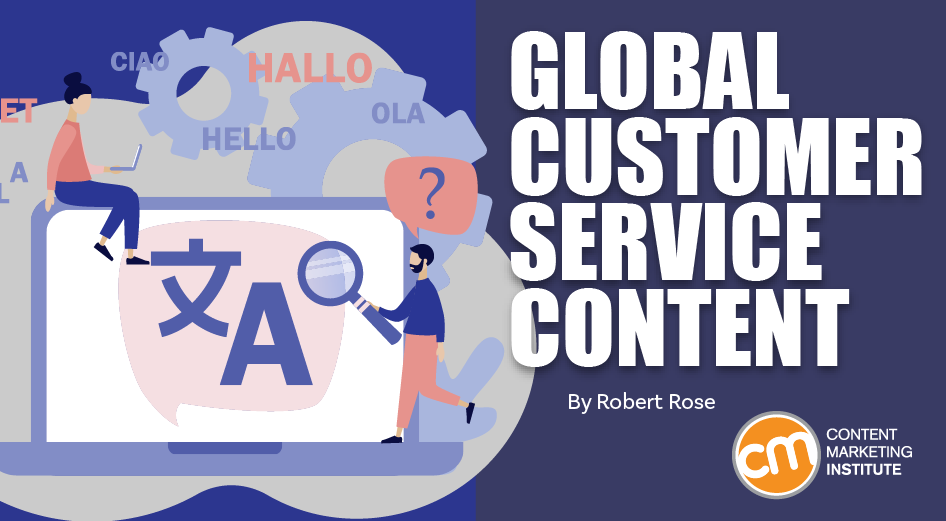Deliver the right message to the right person at the right time.
It’s marketing’s guiding principle. But, at global companies, an added challenge enters the mix – delivering it in the right language for the customer. Together, they create what may be the most pressing issue for their customer service content strategy.
In customer service, there is no room for “miscommunication.” In a 2021 study, consumers’ most frequently cited priorities for customer support in their native language included:
- Quick response (47%)
- Fast resolution (46%)
- High quality (40%)
In other words, from your consumer’s perspective, the guiding principle should be: Deliver a quality message to the right person in their native language faster than they expect it.
Delivering the right message to the right person in their native language should top the priority list for customer service #content, says @Robert_Rose via @CMIContent. Click To TweetCertainly, a company must possess many capabilities to meet those requirements. But one stands out – delivering quality content in the language your customer prefers.
But scaling quality content translation efforts isn’t easy. I recently wrote a report sponsored by Unbabel that draws on my consulting experiences and third-party research to help companies develop translation strategies for customer service content. Among the highlights:
Translation strategy: A high-quality, real-time approach
Translation stands as one of the most challenging aspects of managing a multichannel digital content ecosystem. Like every aspect of the modern customer experience, brands deliver service through static content interfaces, such as websites and online how-to guides; algorithmic and dynamic content displays, such as interactive tools and communities; and human employees using real-time conversational interfaces. Sometimes, all that happens simultaneously.
Providing customer service agents with the best information in the right language is one thing. Enabling a multilingual, self-service experience, including online chat, email, or online FAQs, is another.
To succeed, companies must develop a translation strategy to accompany their overarching content strategy.
Global companies must integrate a translation strategy into their #ContentStrategy, says @Robert_Rose via @CMIContent. Click To Tweet3-pillar translation strategy to work with your content strategy
I recommend a translation strategy that addresses these three pillars:
1. Balanced content interfaces
Integrate self-serve content repositories with live support from people who can intervene with just the right message in context. Internally facing technology can help accomplish this, letting customer service reps deliver live, real-time content in the preferred language.
2. Workflows designed for speed and agility
Create workflows and processes for translating customer service content. They should include when, where, and how to translate the content. It may make sense to translate different classes of content at different points in the creation process. Slower-evolving content (product FAQs, how-to documentation, contractual or purchase information, etc.) may get translated at a different point in their development than the content used in real-time customer service interactions (email responses, chat, etc.).
Design workflows and processes to translate customer service #content with speed and agility, says @Robert_Rose via @CMIContent. Click To Tweet3. Artificial intelligence
AI-based technologies play a supportive role in many automated customer service interfaces (with varying degrees of success). AI for translation may prove particularly useful. The key is to understand where to apply it because human participation is still needed. Customer agents need the right signals to know when to step in and tune the content based on the uniqueness of the person’s needs. Ideally, an AI solution would learn (from those human interactions) to suggest phrasing or change the content to address the situation for the customer’s needs.
Each of these pillars also involves decisions (after the appropriate exploration) that I detail in the report’s action steps.
Help deliver quality content around the world
Global companies must integrate a translation strategy into the overall content strategy.
For customer service content, a translation strategy ensures the business provides accurate and consistent information across platforms and communication channels in exactly the right context. Communication in a customer’s native language starts a service interaction in a respectful way. This inclusivity helps companies develop more proactive customer experiences that answer questions and solve challenges even before the customer has them – and that’s just what they want.
Cover image by Joseph Kalinowski/Content Marketing Institute

